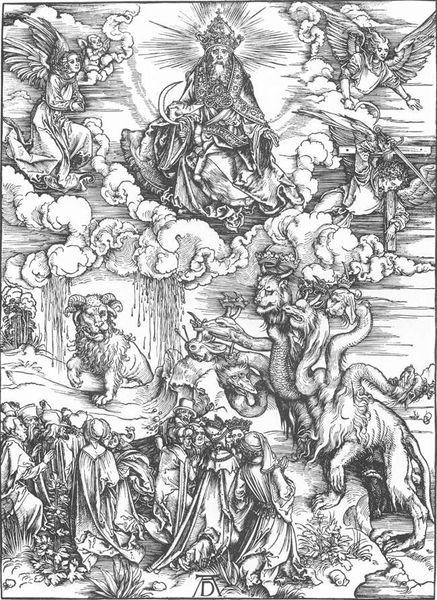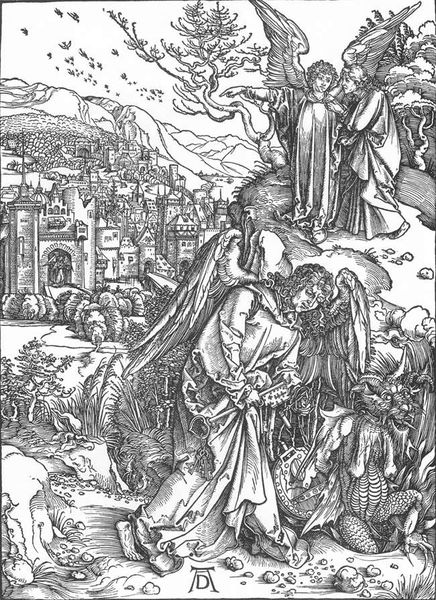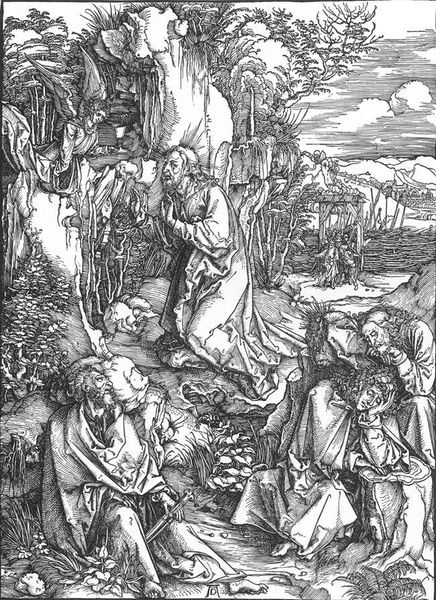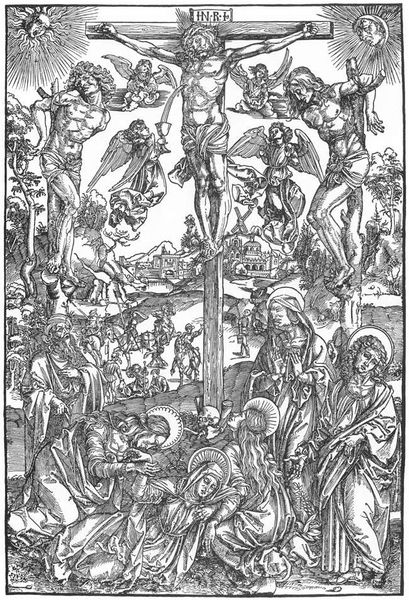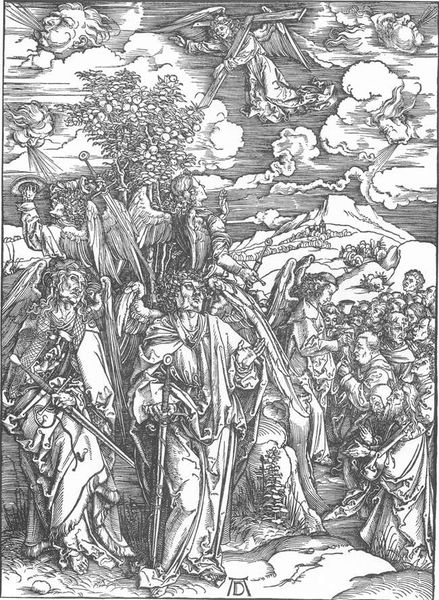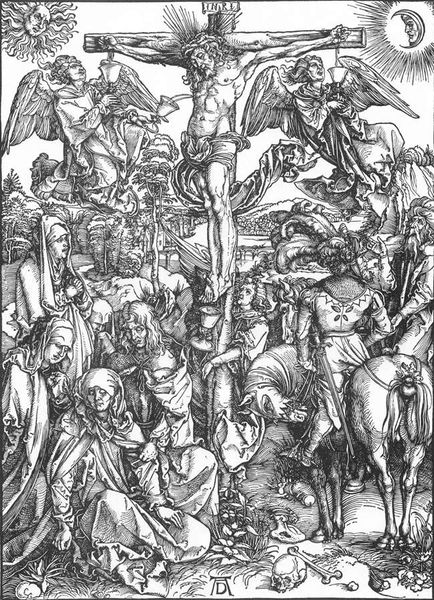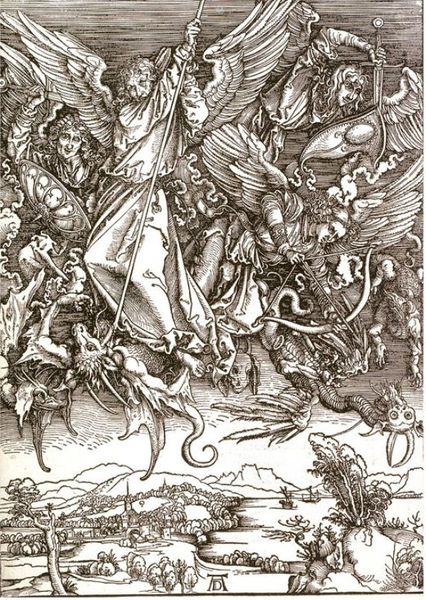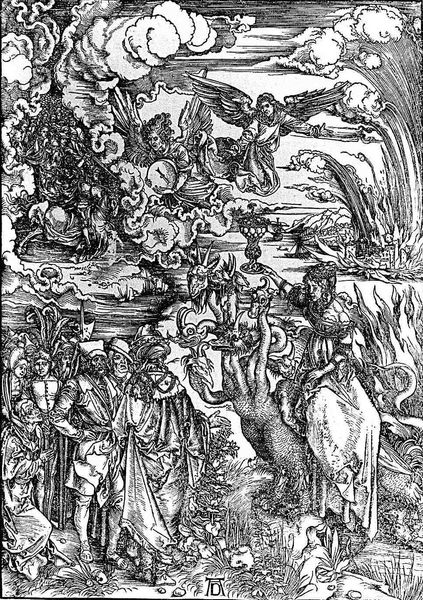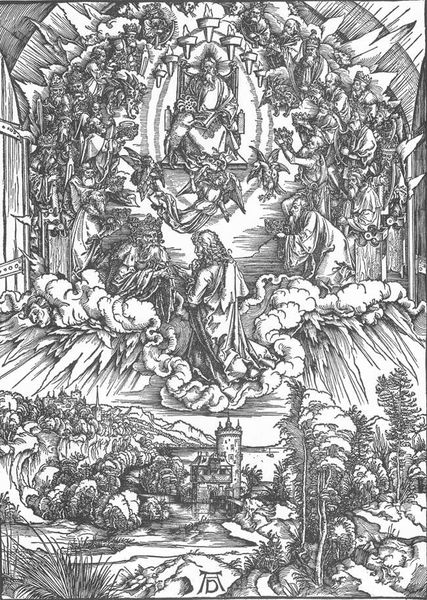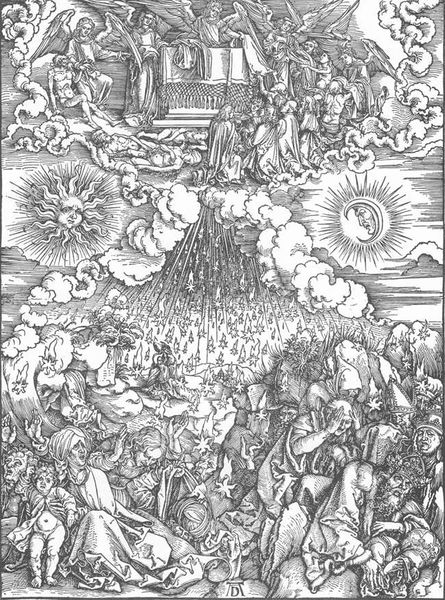
print, woodcut, engraving
#
narrative-art
# print
#
pen illustration
#
figuration
#
ink line art
#
arch
#
woodcut
#
christianity
#
line
#
history-painting
#
engraving
#
angel
#
christ
Copyright: Public domain
Curator: The print we’re observing, "The Seven Trumpets Are Given to the Angels", comes to us from Albrecht Durer, dated 1498. Durer executed this piece as a woodcut, and the linear quality contributes much to the overall feel. Editor: It’s quite striking! The contrast is incredibly vivid, which is surprising given the medium. All the tiny marks coalesce into this scene of celestial announcement meeting earthly turmoil; it feels quite theatrical and staged, but still very much in motion. Curator: Indeed. Observe how Durer deploys line. We can see hatching and cross-hatching delineate form and create areas of shadow. Take in the composition, which seems divided between the heavenly realm above and a scene of chaos below. Editor: It's the sheer number of marks that truly captivates me. Imagine the skill involved in cutting away the wood to produce each line and the physical demands of such sustained labor. Each cut represents a deliberate act, transforming material into narrative. Do we know what paper or inks would have been used at this time? Curator: While precise records can be elusive, scholars have identified various contemporary paper and ink sources that would have been consistent with this woodcut print from 1498. Durer expertly manipulated these materials for formal purposes. Consider, for example, how the symmetry is handled by Durer – on the right side, an angel sounding a trumpet, counterbalanced on the left, providing not only aesthetic balance but reinforcing the central theological narrative of impending judgment and communication from heaven. Editor: Absolutely, but I wonder, was the use of printmaking significant at this time in widening access to religious imagery for the lower classes? The act of replicating allows for multiple viewers in many places and brings Durer’s commentary on the text directly to an audience in need of guidance, providing tangible and consumable representations of biblical themes. Curator: Undoubtedly. Durer skillfully integrates complex theological elements within a clear, organized pictorial structure. The thematic elements come alive because of these structures that bring organization and narrative cohesion to the detailed and potentially overwhelming imagery. Editor: Understanding the context of Durer's workshop sheds light on artistic collaboration and industrial process behind the prints. Appreciating the economics around art at the time helps to enrich understanding as well. Curator: That perspective brings added insight into the way meaning is constructed. This type of print truly encapsulates a period where innovative forms enabled narrative power to influence public sentiments. Editor: By analyzing the labor and physical processes within social use, we gain appreciation for art's social effects as much as for art itself. Thank you for providing this fascinating context!
Comments
No comments
Be the first to comment and join the conversation on the ultimate creative platform.
